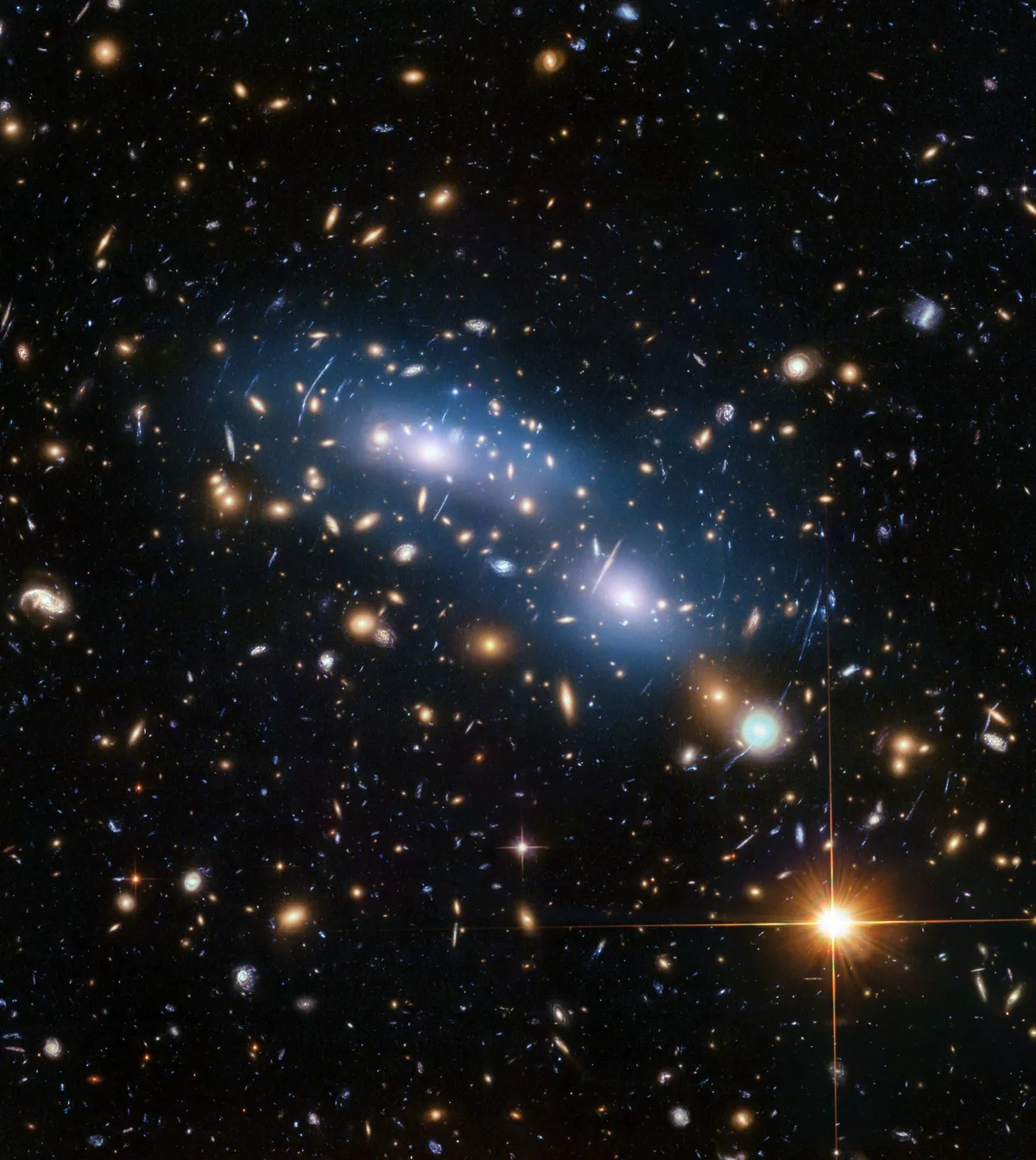
This is galaxy cluster MACS J0416, part of a study that has revealed the first stars in the Universe must have formed earlier than previously thought.
Astronomers used Hubble to study the first generation of stars in the early Universe by looking so deep into space they could observe light from within 500 million years of the Big Bang.
The team, led by Rachana Bhatawdekar of the European Space Agency, wanted to study Population III stars, which were forged from primordial material that emerged from the Big Bang.
These stars most likely formed from hydrogen, helium and lithium, as those were the only elements that existed before the development of heavier elements like oxygen, nitrogen, carbon and iron.
The team studied MACS J0416 as part of the Hubble Frontier Fields programme, which observed a total of 6 galaxy clusters from 2012 - 2017 using gravitational lensing.
Gravitational lensing is a technique that was predicted by Einstein, and uses the warping of space-time by massive objects like galaxies and galaxy clusters to study even more distant objects.
Light from these more distant galaxies is magnified by the mass of the foreground objects and allows astronomers to study the distant galaxies beyond the normal capabilities of their telescope.
Find out more about this in our guide to gravitational lensing.
Bhatawdekar and her team developed a technique that enabled them to remove light from the foreground lensing galaxies, which meant they could discover galaxies with lower masses than ever observed with Hubble, at distances so far they were observing light from when the Universe was less than a billion years old.
"We found no evidence of these first-generation Population III stars in this cosmic time interval", says Bhatawdekar.
The results suggest the formation of the first stars and galaxies must have begun closer to the time of the Big Bang than previously thought.
For more on this story, read the full release on the Hubble Space Telescope website.
Image stats
Observatory Hubble Space Telescope
Study release date 3 June 2020
Image release date 20 December 2018
Image credit NASA, ESA, and M. Montes (University of New South Wales, Sydney, Australia)
